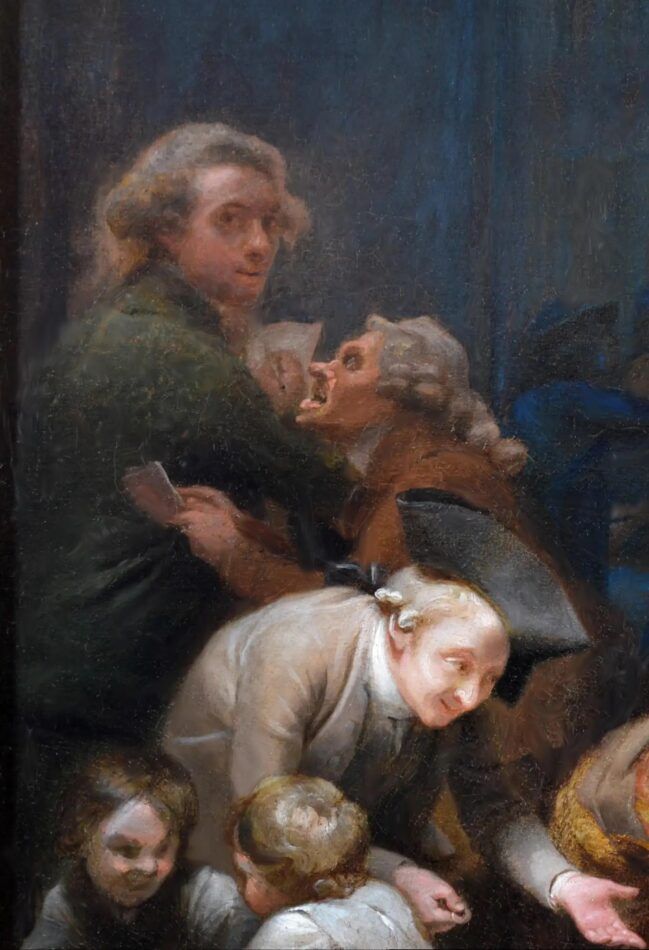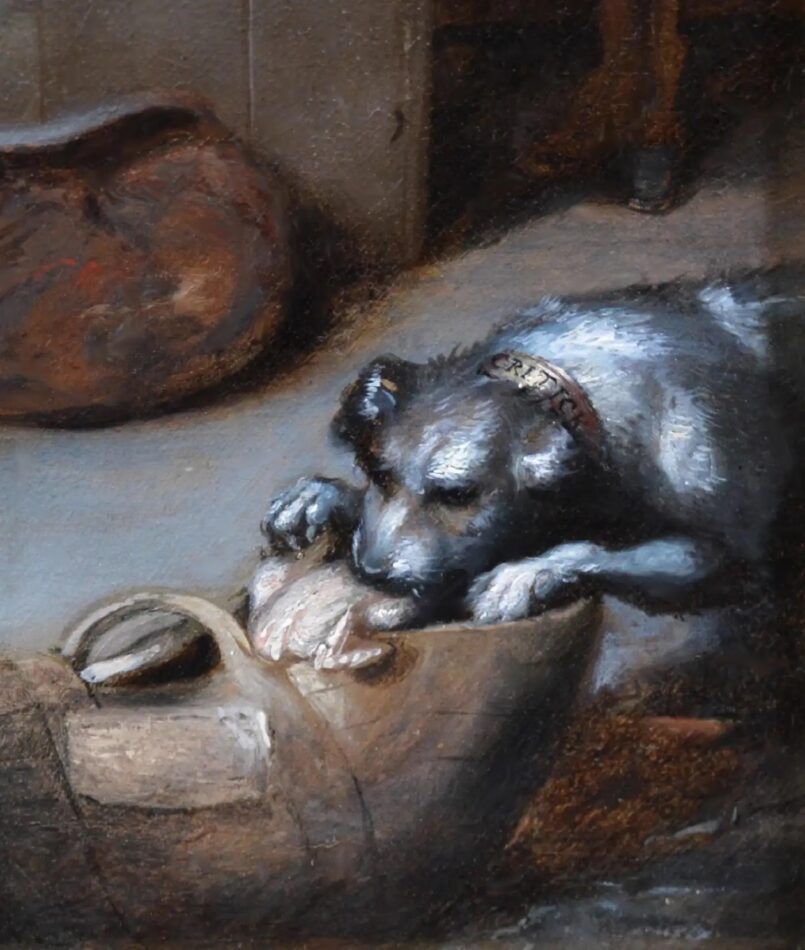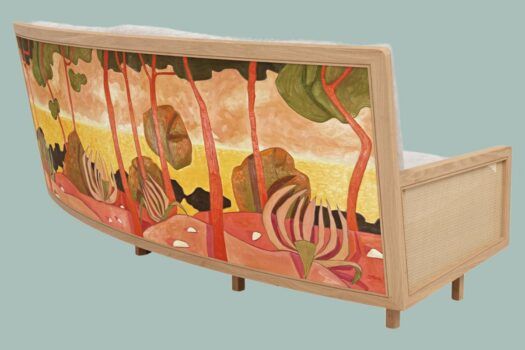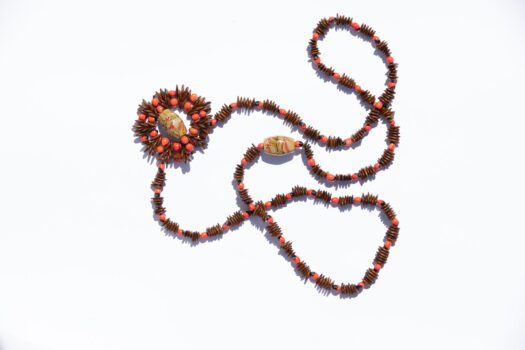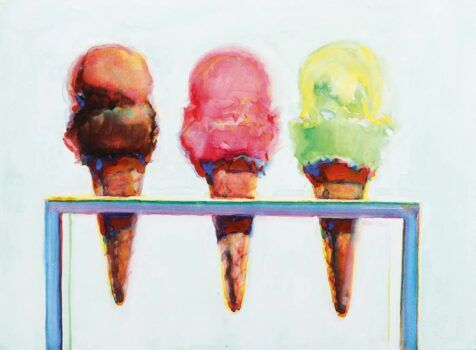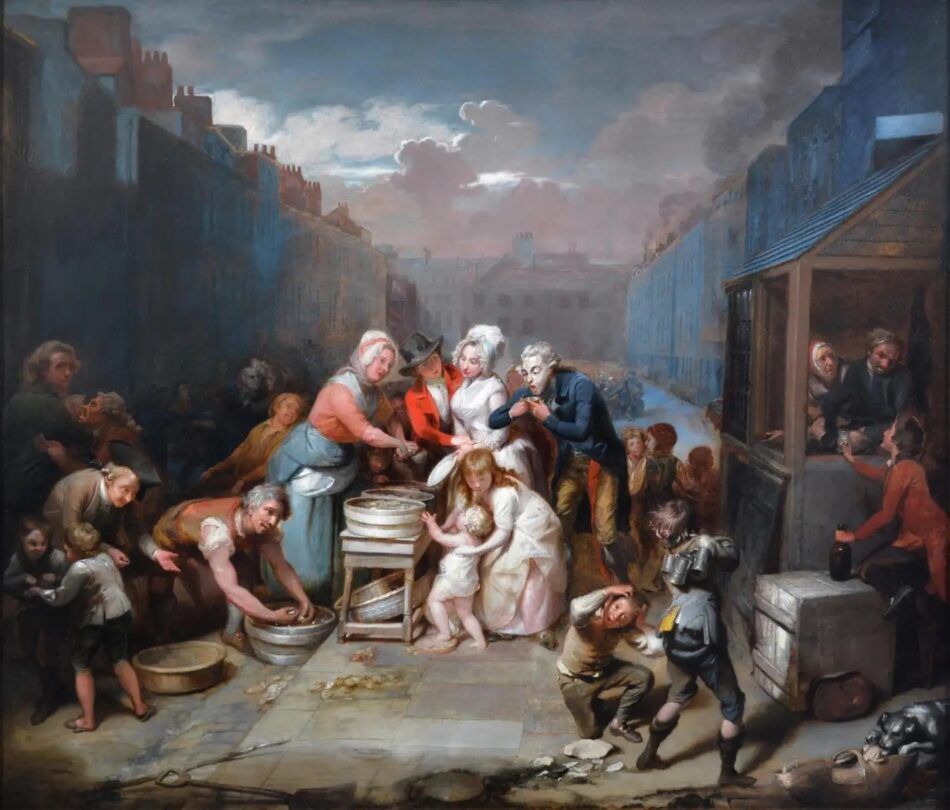
A masterpiece by a talented artist from a storied period of art history is the type of thing most dealers pray for. That prayer was answered for Gavin Claxton, of Academy Fine Paintings in London. He found the oil on canvas St. James’ Day, 1788, by English painter Richard Morton Paye in the stash of a Scottish collector.
“The scene is St. James’ Day — always celebrated in the summertime,” Claxton says. “It’s now a lost festival in Britain, but it was a big deal in the Georgian era, and it coincided with the first day of oyster season.”
Indeed, locals are shown surrounding an oysterman in this crowded, riotous London street scene full of all sorts of picaresque humor. One man retches, a dog steals a plucked chicken from a basket, and a fancy fellow has his wig pulled off. The painter himself, a contemporary of Thomas Gainsborough and Joshua Reynolds who was well known in his day but has been largely forgotten, is seen at the far left having his pocket picked.
But the image is more than just fun. “He painted the highest and lowest of Georgian society all together at the same time, and no other event would have allowed for that,” says Claxton.
For years, the work was thought to be by another painter. But in the process of conserving and cleaning it, Claxton was able to provide its proper attribution.
Restoring the painting — which was exhibited at the Royal Academy the year it was created, nearly two and a half centuries ago — revealed other points of delight. The grandee being de-wigged has the face of a famous collector of the day, and the dog’s collar bears the label CRITICK. Biting the hand that feeds, indeed. You can see why Claxton says, “I’m tremendously proud to have this picture.”
